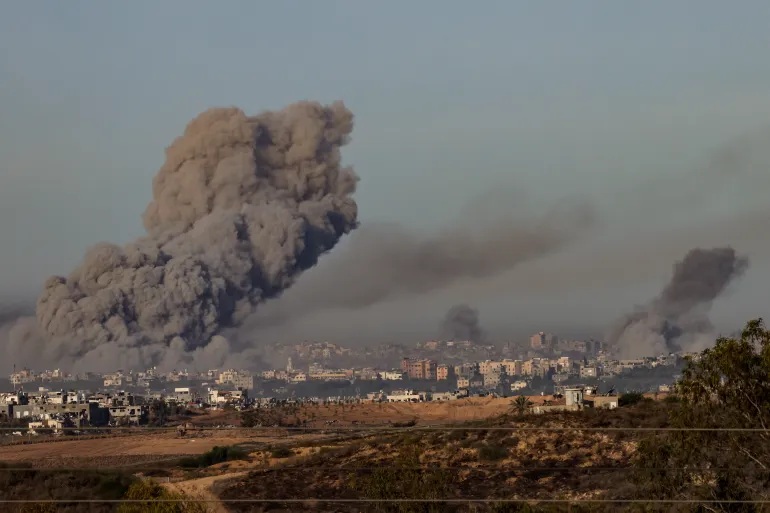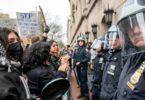Rami G Khouri
On November 8, the Israeli media monitoring group “Honest Reporting” published a report suggesting six Gaza-based freelance photographers who have been covering Israel’s war on Gaza for four leading international media organisations may have had advance notice of Hamas’s October 7 attack on southern Israel.Israel’s reaction to the suggestion was swift and brutal. Israeli Prime Minister Benjamin Netanyahu’s office accused the journalists named in the report of being “accomplices in crimes against humanity”. Danny Danon, a senior member of Netanyahu’s Likud party and a former Israeli ambassador to the United Nations, wrote on X that the photojournalists should be “eliminated”. “We will hunt them down together with the terrorists,” he wrote. The discourse on whether the Palestinian photojournalists and those who published their work had prior knowledge of the Hamas attack occupied media airways for a few days. But the controversy soon came to an abrupt end when all four media companies in question – CNN, Reuters, The Associated Press and The New York Times – firmly rejected insinuations that they or the photographers they work with had any advance knowledge of the attack. They called Honest Reporting’s story “irresponsible” and said, “It jeopardised the safety of all media working in Israel or the Palestinian territories.” Honest Reporting Executive Director Gil Hoffman said he was “so relieved” to have found the four companies’ statements on the issue “adequate”. He added that his organisation never “accused” the media companies of having advance knowledge of the attack but had only “raised questions”.Why is this debacle worth remembering today? Because the incident had all the hallmarks of standard Israeli propaganda: using the real trauma and tragedy of a horrific attack to portray a conspiracy of collusion between Western media organisations and Israel’s enemies. Propaganda campaigns or single salvos already dominate Palestinian-Israeli confrontations. Since its founding in 1948, Israel has developed effective propaganda and information manipulation techniques that give it an edge in getting the Western media to reflect its side of the story. So it’s important to note when things in this realm start to change. This tale about whether Gaza photojournalists had advance knowledge of Hamas’s attack was the latest addition to a rapidly expanding list of recent Israeli propaganda efforts that have failed – mainly because Palestinians, Arabs, and most international observers of the conflict and the region now routinely investigate any serious Israeli accusation, and often expose it as a lie.Consequently, American media, including organisations that traditionally presented Israeli views and allegations as fact without due diligence, now assess Israel’s media statements and narratives more carefully, especially when they are about military actions that kill Palestinian civilians. One national newspaper reporter privately told me that journalists in the United States are increasingly sceptical of narratives pushed by security forces whether in the US, Israel or any other country because of how the Black Lives Matter movement has raised awareness of social justice issues and exposed police hypocrisy and lies. “A soul-searching kind of change is going on,” the journalist said, “because we have to do better when reporting on race and ethnicity, especially in cases of violent incidents involving the police or military. Since 2020, we see the parallels between Black Lives Matter and Gaza very clearly.”In recent years, there have been many occasions when Israel was caught bending the truth or outright lying to hide from the world its crimes against Palestinians and violations of international law. After Palestinian-American journalist Shireen Abu Akleh was shot and killed during an Israeli raid in the Jenin refugee camp in the occupied West Bank in May 2022, for example, Israel claimed she was “hit by indiscriminate Palestinian gunfire” in an exchange of fire with Palestinian gunmen. Yet, in a matter of days, several independent investigations confirmed that she was killed in a targeted attack by an Israeli sniper. More recently, in early November, an Israeli air strike on an ambulance convoy in the besieged Gaza Strip killed 15 Palestinians. Israel said it was targeting “Hamas positions” but failed to convince the international community.On November 11, the official Arabic account run by Israel’s Ministry of Foreign Affairs posted a video of a nurse, apparently agitated, talking about Hamas overrunning the al-Shifa Hospital and taking supplies meant for patients. It was clearly a fake and was deleted by Israeli authorities without explanation after significant public backlash. Last week, the Israeli military released a video of a room in Gaza’s al-Rantisi Children’s Hospital that it claimed included a duty roster in Arabic of Hamas militants guarding Israeli captives there – which in fact was just a handwritten calendar with the days of the week. These are just a few recent examples of Israeli officials obfuscating the truth or outright lying to try to hide their criminal activity from global media audiences (and probably also from the International Criminal Court). These repeated and easily exposed lies have sharply raised American journalists’ scepticism of official Israeli statements. These days, even the most Israel-friendly media organisations are reluctant to publish Israeli claims as fact without seeing hard evidence.Even journalists who tend to identify with Israeli views are more careful now when they deal with Israeli military statements, especially in cases of deaths and injuries, another television journalist told me. This change in approach can easily be seen in the US media’s relatively careful handling of Israeli claims that Palestinian hospitals in Gaza shelter Hamas military bases or command centres. Israeli views continue to dominate American mainstream media, but as a result of this trend, the Israelis are increasingly being pushed to provide evidence for claims that the media once disseminated with no questions asked. Palestinian views also appear in the media more often, partly reflecting a critical structural change in society: Young Americans are much more even-handed between Israel and Palestine and more actively challenge US and Israeli government actions that they feel are excessively militaristic, unwarranted or unjust. Another journalist with domestic and global reporting experience summed it up to me like this: “We’re feeling unprecedented generational and societal changes simultaneously in contexts of racial and social justice. This is a reckoning for the journalism industry.”Aljazeera







